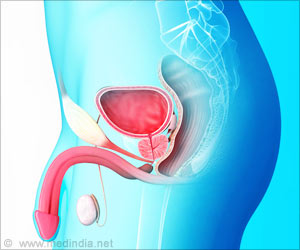At a conference of the International Aids Society Conference in Rio de Janeiro it was presented that the circumcised men were 65 per cent less likely to become infected with the deadly AIDS virus.
Several previous studies have suggested that circumcision lowers rate of HIV infection. This first was noticed in some parts of Africa, where some tribes routinely circumcised while others did not. Researchers have believed that virus may survive better in a warm, wet environment like that found underneath the foreskin. The circumcised men have their glans skin more thick and this may prevent the virus from penetrating it.The World Health Organisation said it was working on current guidelines for the procedure as if all the current studies are validated the demand for the operation may increase.
"Although the trial shows promising protective effects of adult male circumcision in reducing HIV acquisition, UNAids emphasises that more research is needed," the United Nations Aids agency said in a statement.
Two further studies are currently underway in Uganda and Kenya that is likely to provide more information and resolve this question.
"It is a very sensitive issue, and not just biologically," said UNAids chief scientific adviser Catherine Hankins. She is worried that people should not abandon routine precautions if circumcised such as using condoms and behavioural changes to limit the number of sexual partners. Circumcision should not provide a false sense of security and should not increase risky and promiscuous sexual behaviour.
Further News on Circumcision Ritual May Protect Men From AIDS from Medindia
Advertisement
https://www.medindia.net/News/
view_news_main.asp?x=3902&t=gn
Advertisement
HIV virus is transmitted by exchange of body fluids from infected person to the uninfected. Sexual activities can transmit the virus when direct contact occurs between the HIV infected persons body fluid and mucous membranes of another. This spread can be prevented by avoiding these behaviors or by use of preventive condoms. Use of disposable syringes can avoid transmission of the virus by needle. Routine testing for HIV can prevent transmission through blood transfusions.
https://www.medindia.net/patients/
aids/prevention_about.htm
Further Information on Circumcision from Medindia
What is a normal foreskin?
The skin over the tip of penis normally folds on itself as a sleeve and attaches to the head of penis. This extra skin is called foreskin. In newborn babies the under surface of the foreskin is fused to the head of penis. Because of this in 95% of newborn babies the foreskin can not be pulled back. This is referred to as ‘physiological phimosis’ or ‘non retractile foreskin’. However as they get older it separates slowly; by 5 years of age, 50% of boys have a foreskin that can be pulled back; and by 15 years almost 90% have normal adult pattern.
https://www.medindia.net/patients/
paediatrics/Phimosis.asp











